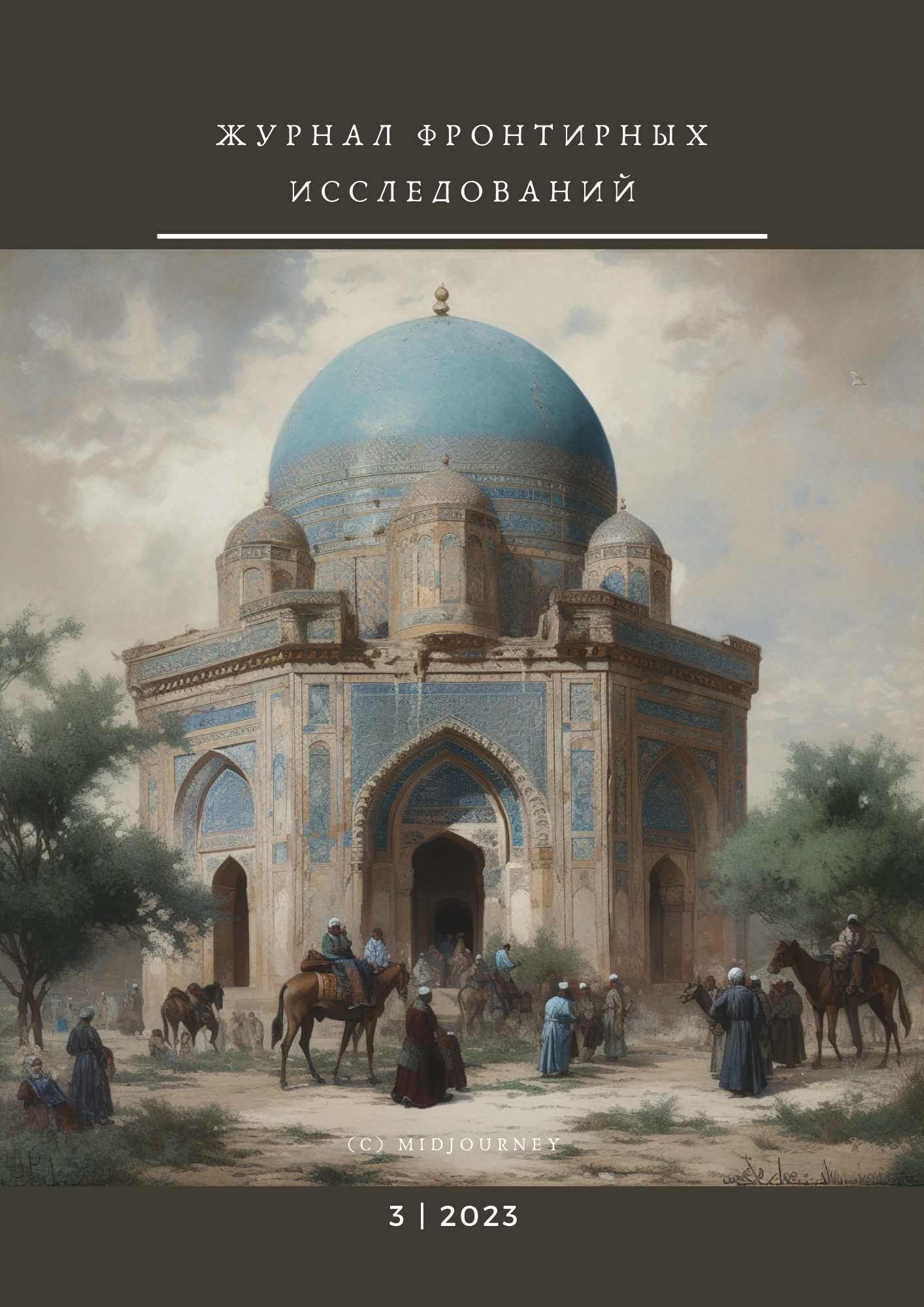Abstract
The handicraft industry remained an integral part of the mixed economy of the Russian Empire. Foreign artisans, primarily those of German descent, played a significant role in the capital cities from the 18th century onward. Most of these craftsmen relocated to Russia in response to an invitation from the Tsarist government. Around the turn of the 18th and 19th centuries, German artisans began forming professional communities (workshops) in St. Petersburg, falling under the jurisdiction of the German Craft Council. Initially, they were exempt from compulsory registration with the workshops and the payment of state and other taxes. The homogenization policy adopted by Emperor Nicholas I contributed to the formal integration of German craftsmen into the urban economy, gradually diminishing the existing disparities between them and Russian artisans.
This research aims to examine the characteristics of life and work of German artisans in St. Petersburg during the first half of the 19th century. It places particular emphasis on the analysis of the evolution of their legal status, as well as the evaluation of their professional, demographic, and social development. Special attention is paid to the practices of both vertical and horizontal mobility.
The foundation of this study rests on published statutes, regulations, and archival materials from the collections of the State Archive of the Russian Federation and the Central State Historical Archive of St. Petersburg. Many of these materials are being introduced into scientific discourse for the first time. The article is intended for specialists studying ethnic and professional groups within the urban population of the Russian Empire.
References
Aller, S. I. (1822). Ukazatel' zhilishch i zdaniy v Sankt-Peterburge, ili Adresnaya kniga, s planom i tablitseyu pozharnykh signalov / Izdal Samuil Aller na 1823 god. Tipografiya Departamenta narodnago prosveshcheniya. (In Russian).
Attengofer, G. L. (1820). Mediko-topograficheskoe opisanie Sankt-Peterburga, glavnago i stolichnago goroda Rossiyskoy imperii / Sochinenie Genrikha Lyudviga fon Attengofera, doktora meditsiny, v rossiysko-imperatorskoy sluzhbe nadvornago sovetnika i mnogikh uchenykh obshchestv chlena. Perevod s nemetskago. Imperatorskaya Akademiya nauk. (In Russian).
Busch, M. (1995). Deutsche in St. Petersburg 1865-1914: Identität und Integration [Germans in St. Petersburg 1895—1914: Identity and integration]. Klartext-Verlag. (In Germany)
Central State Historical Archive of St. Petersburg (CSHA SPb). (1787). F. 781. In. 2. C. 74. (In Russian).
Central State Historical Archive of St. Petersburg (CSHA SPb). (1795). F. 781. In. 2. C. 2071. (In Russian).
Central State Historical Archive of St. Petersburg (CSHA SPb). (1804). F. 221. In. 1. C. 222. (In Russian).
Central State Historical Archive of St. Petersburg (CSHA SPb). (1810). F. 254. In. 1. C. 2545. (In Russian).
Central State Historical Archive of St. Petersburg (CSHA SPb). (1815). F. 223. In. 1. C. 4. (In Russian).
Central State Historical Archive of St. Petersburg (CSHA SPb). (1816). F. 223. In. 1. C. 5. (In Russian).
Central State Historical Archive of St. Petersburg (CSHA SPb). (1839). F. 788. In. 2. C. 42. (In Russian).
Central State Historical Archive of St. Petersburg (CSHA SPb). (1846-1848). F. 239. In. 1. C. 1608. (In Russian).
Central State Historical Archive of St. Petersburg (CSHA SPb). (1848). F. 223. In. 1. C. 615. (In Russian).
Central State Historical Archive of St. Petersburg (CSHA SPb). (1849-1851). F. 223. In. 1. C. 671. (In Russian).
Central State Historical Archive of St. Petersburg (CSHA SPb). (1856-1858). F. 223. In. 1. C. 2331. (In Russian).
Complete Collection of Laws of the Russian Empire. Edition I ( CCL RI – I). (n. d.-c). Vol. 35. No 27467. (In Russian).
Complete Collection of Laws of the Russian Empire. Edition I (CCL RI – I). (n. d.-a). Vol. 25. No 19187. (In Russian).
Complete Collection of Laws of the Russian Empire. Edition I (CCL RI – I). (n. d.-b). Vol. 31. No 24116. (In Russian).
Complete Collection of Laws of the Russian Empire. Edition II ( CCL RI – II). (n. d.). Vol. 21. No 19721. (In Russian).
Dal'man, D. (1999). Peterburgskie nemtsy v XVIII stoletii: Krest'yane, remeslenniki, predprinimateli. In G. I. Smagina (Ed.), Nemtsy v Rossii: Peterburgskie nemtsy = Die Deutschen in Russland: Petersburger deutsche: Sbornik statey (pp. 156‑163). Izdatel'stvo Dmitriy Bulanin. (In Russian).
Georgi, I. G. (1794). Opisanie rossiysko-imperatorskogo stolichnogo goroda Sankt-Peterburga i dostopamyatnostey v okrestnostyakh onago. Chast' 1. Pri Imperatorskom Shlyakhetskom sukhoputnom kadetskom korpuse. (In Russian).
Keller, A. V. (2020). Remeslo Sankt-Peterburga XVIII – nachala XX veka (administrativno-zakonodatel'nyy i sotsial'no-ekonomicheskiy aspekty). Aleteyya. (In Russian).
Keller, A. V. (2022). Russian-Prussian communicative practices on the example of labour migration of the Berlin locksmith F.V. Knack in 1836-1837. Studia humanitatis, 2. https://doi.org/10.24412/2308-8079-2022-2-3 (In Russian).
Manro, Dzh. (2016). Peterburg v tsarstvovanie Ekateriny Velikoy. Samyy umyshlennyy gorod. Tsentrpoligraf. (In Russian).
National Library of Russia (NLR). (1789-1790). Department of Manuscripts. F. 885. Tumansky F. O. The experience of narrating about the deeds, position, state and division of the St. Petersburg province, including peoples and villages from ancient times to the present, divided into three branches with additions.
Pazhitnov, K. A. (1952). Problema remeslennykh tsekhov v zakonodatel'stve russkogo absolyutizma. Izdatel'stvo Akademii nauk SSSR. (In Russian).
Remeslennyy ustav. Svod zakonov Rossiyskoy imperii. Vol. XI. Part II. (1857). Tipografiya Vtorogo otdeleniya Sobstvennoy Ego Imperatorskogo Velichestva Kantselyarii. (In Russian).
Repina, A. V. (1999). Nemetskie bulochniki v Sankt-Peterburge. In G. I. Smagina (Ed.), Nemtsy v Rossii: Peterburgskie nemtsy = Die Deutschen in Russland: Petersburger deutsche: Sbornik statey (pp. 197–204). Izdatel'stvo Dmitriy Bulanin. (In Russian).
Ryndzyunskiy, P. G. (1958). Gorodovoe grazhdanstvo doreformennoy Rossii. Izdatel'stvo Akademii nauk SSSР. (In Russian).
State Archive of the Russian Federation (SARF). (1930). F. R-5449. In. 1. C. 97. L. 43. (In Russian).
Tumanskiy, F. O. (1792). Opisanie Sanktpeterburga. In Rossiyskiy magazin. Part 1. (pp. 12-186). Pis'menopechatnya I.K. Shnora.
Vyatkin, M. P. (1955b). Ekonomicheskaya zhizn' Peterburga v period razlozheniya krepostnichestva. In M. P. Vyatkin (Ed.), Ocherki istorii Leningrada: Vol. 1: Period feodalizma (1703-1861 gg.) (pp. 447–505). Izdatel'stvo Akademii nauk SSSR. (In Russian).
Vyatkin, M. P. (Ed.). (1955a). Ocherki istorii Leningrada: Vol. 1: Period feodalizma (1703-1861 gg.). Izdatel'stvo Akademii nauk SSSR. (In Russian).

This work is licensed under a Creative Commons Attribution 4.0 International License.


